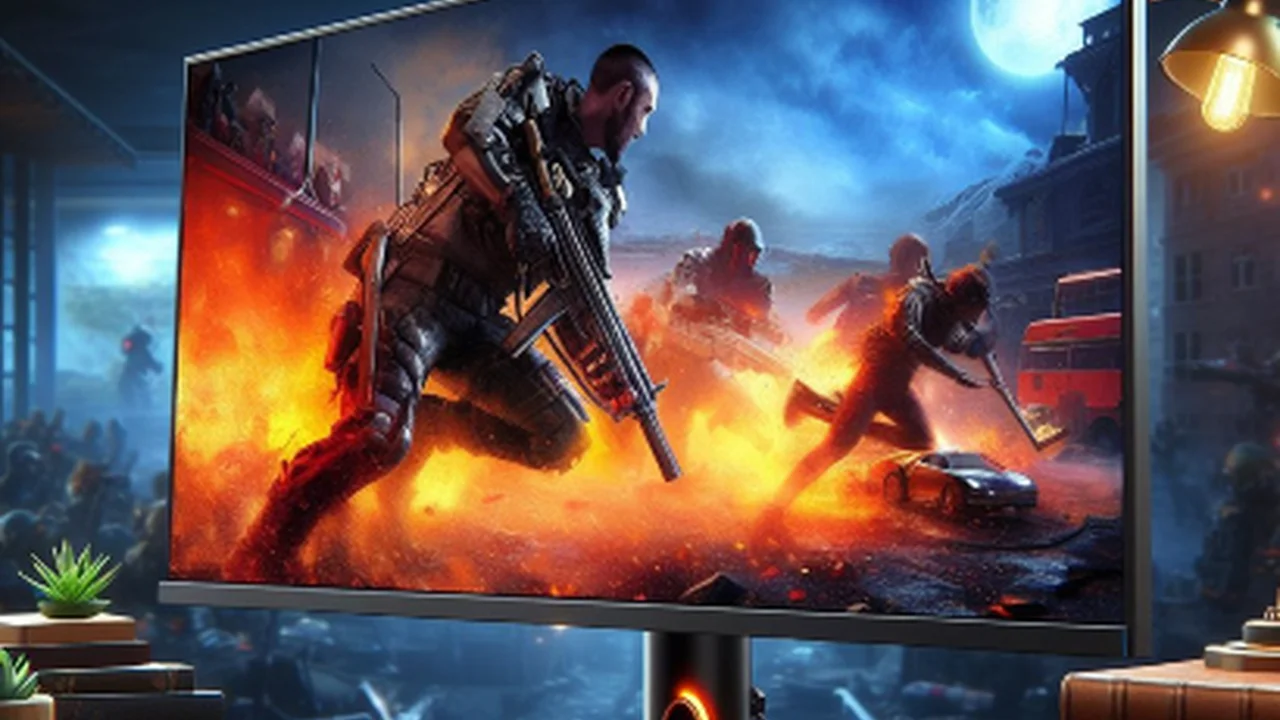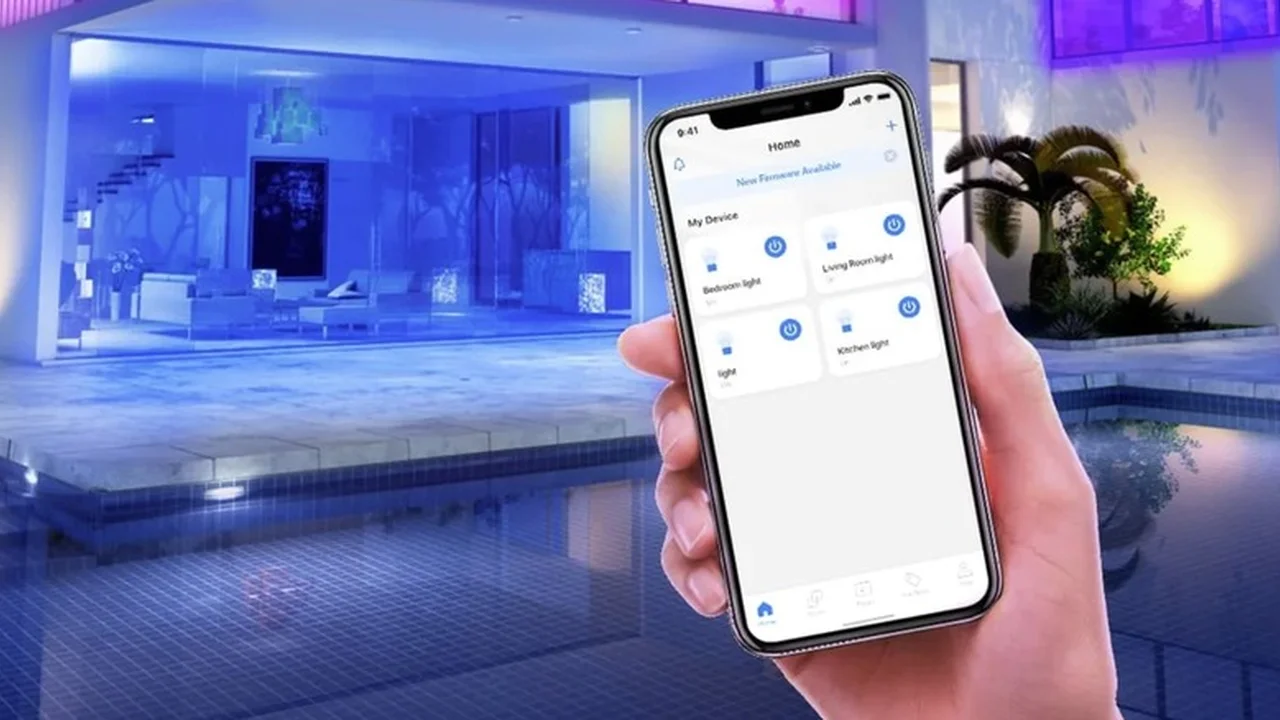
3 Best Gaming Monitors for Immersive Visuals
Hey gamers! Ready to level up your visual experience? A great gaming monitor isn't just a luxury; it's a crucial component that can significantly impact your gameplay, immersion, and even your competitive edge. Forget about blurry motion, tearing screens, or washed-out colors. We're diving deep into what makes a gaming monitor truly stand out and recommending three of the absolute best options available right now. Whether you're a casual player or a hardcore esports enthusiast, getting the right display can make all the difference.
Why Your Gaming Monitor Matters More Than You Think
You might have the most powerful graphics card and the fastest CPU, but if your monitor can't keep up, you're leaving performance on the table. Think of it like this: your PC is generating hundreds of frames per second, but if your monitor can only display 60 of them, you're missing out on a smoother, more responsive experience. Beyond just frame rates, factors like response time, panel type, and adaptive sync technologies play a massive role in how fluid and enjoyable your games feel.
Understanding Key Gaming Monitor Specifications
Before we jump into our top picks, let's quickly break down some essential terms you'll encounter when shopping for a gaming monitor. Knowing these will help you make an informed decision based on your specific needs and budget.
Refresh Rate Explained Hz and Smoothness
The refresh rate, measured in Hertz (Hz), indicates how many times per second the monitor can update the image on the screen. A higher refresh rate means smoother motion and less motion blur. While 60Hz is standard for most non-gaming monitors, serious gamers often look for 120Hz, 144Hz, 240Hz, or even 360Hz. This is especially critical for fast-paced games like first-person shooters (FPS) or racing games where every millisecond counts.
Response Time Milliseconds and Ghosting
Response time, measured in milliseconds (ms), refers to how quickly a pixel can change from one color to another. A lower response time (e.g., 1ms or 0.5ms) is desirable for gaming as it reduces ghosting or motion blur, where trails appear behind moving objects. This is particularly noticeable in high-contrast scenes or when the camera pans quickly.
Panel Types IPS TN VA and Color Quality
- IPS (In-Plane Switching): Offers excellent color accuracy and wide viewing angles, making them great for visually rich games and content creation. Response times have improved significantly, making them viable for gaming.
- TN (Twisted Nematic): Known for their extremely fast response times (often 1ms), making them a favorite for competitive gamers. However, they typically have poorer color reproduction and narrower viewing angles compared to IPS or VA.
- VA (Vertical Alignment): Provides good contrast ratios, leading to deeper blacks and vibrant colors, often better than IPS in this regard. Viewing angles are generally better than TN but not as wide as IPS. Response times can vary, but many modern VA panels are quite good for gaming.
Adaptive Sync Technologies G-Sync and FreeSync
Screen tearing, where the top and bottom parts of the screen display different frames, is a common issue. Adaptive sync technologies like NVIDIA's G-Sync and AMD's FreeSync synchronize the monitor's refresh rate with your graphics card's frame rate, eliminating tearing and reducing stuttering. If you have an NVIDIA GPU, look for G-Sync or G-Sync Compatible monitors. If you have an AMD GPU, FreeSync is your go-to.
Resolution Pixels and Visual Clarity
Resolution refers to the number of pixels on the screen (e.g., 1920x1080 for Full HD, 2560x1440 for QHD/2K, 3840x2160 for 4K/UHD). Higher resolutions offer sharper images and more screen real estate, but they also require more powerful graphics cards to maintain high frame rates. For competitive gaming, 1080p or 1440p at high refresh rates are often preferred. For immersive single-player experiences, 4K can be breathtaking.
Our Top 3 Gaming Monitor Recommendations
Alright, let's get to the good stuff! We've picked three monitors that excel in different areas, catering to various types of gamers and budgets. Each offers a fantastic gaming experience, but they shine in their own unique ways.
1. LG UltraGear 27GP850-B The All-Rounder QHD Champion
LG UltraGear 27GP850-B Specifications and Features
- Screen Size: 27 inches
- Resolution: 2560 x 1440 (QHD/2K)
- Panel Type: IPS
- Refresh Rate: 165Hz (Overclockable to 180Hz)
- Response Time: 1ms GtG (Gray-to-Gray)
- Adaptive Sync: NVIDIA G-Sync Compatible, AMD FreeSync Premium
- HDR: VESA DisplayHDR 400
- Connectivity: 2x HDMI 2.0, 1x DisplayPort 1.4, 2x USB 3.0, Headphone Out
- Typical Price: Around $300 - $400 USD
Why We Love the LG UltraGear 27GP850-B for Balanced Gaming
The LG UltraGear 27GP850-B is a phenomenal monitor that hits the sweet spot for most gamers. It combines a crisp 1440p resolution with a blazing-fast 165Hz (or 180Hz overclocked) refresh rate and a 1ms GtG response time, all on a vibrant IPS panel. This means you get the best of both worlds: excellent color accuracy and wide viewing angles for stunning visuals, coupled with the speed and responsiveness needed for competitive play.
The 27-inch QHD resolution is perfect for gaming, offering a significant visual upgrade over 1080p without being as demanding on your GPU as 4K. Games look incredibly sharp, and the IPS panel ensures colors pop. Whether you're exploring the lush landscapes of an open-world RPG or tracking enemies in a fast-paced shooter, the visuals are consistently impressive.
Both G-Sync Compatible and FreeSync Premium support mean that no matter if you have an NVIDIA or AMD graphics card, you'll enjoy tear-free and stutter-free gaming. The HDR400 certification is a nice bonus, offering a slight boost in contrast and brightness for HDR content, though it's not true HDR. The stand is fully adjustable, allowing for tilt, swivel, pivot, and height adjustments, which is always a plus for ergonomics.
Ideal Use Cases for the LG UltraGear 27GP850-B
This monitor is perfect for gamers who want a high-performance display that doesn't compromise on visual quality. It's an excellent choice for:
- Competitive Gamers: The high refresh rate and low response time provide a significant advantage in esports titles.
- Story-Driven Gamers: The IPS panel's color accuracy makes single-player games look stunning.
- Content Creators: The accurate colors and QHD resolution are also beneficial for photo and video editing.
- Anyone seeking a balanced gaming experience: If you want a monitor that does everything well without breaking the bank, this is it.
2. Samsung Odyssey G7 C27G75T The Curved VA Speed Demon
Samsung Odyssey G7 C27G75T Specifications and Features
- Screen Size: 27 inches (also available in 32 inches)
- Resolution: 2560 x 1440 (QHD/2K)
- Panel Type: VA (Curved 1000R)
- Refresh Rate: 240Hz
- Response Time: 1ms GtG
- Adaptive Sync: NVIDIA G-Sync Compatible, AMD FreeSync Premium Pro
- HDR: VESA DisplayHDR 600
- Connectivity: 2x DisplayPort 1.4, 1x HDMI 2.0, 2x USB 3.0, Headphone Out
- Typical Price: Around $450 - $550 USD
Why We Love the Samsung Odyssey G7 for Ultra-Fast Immersive Gaming
If speed and immersion are your top priorities, the Samsung Odyssey G7 is a beast. This monitor boasts an incredible 240Hz refresh rate and a 1ms GtG response time on a curved VA panel. The 1000R curvature is quite aggressive, wrapping around your field of view to create a truly immersive experience, especially in racing sims or flight games.
The VA panel delivers fantastic contrast ratios, meaning deeper blacks and more vibrant colors than many IPS panels, which is great for atmospheric games. The 240Hz refresh rate is a game-changer for competitive players, offering unparalleled smoothness and responsiveness. You'll notice enemies appearing on screen faster and your inputs feeling more immediate. It's a noticeable step up from 144Hz or 165Hz, provided your GPU can push those frames.
The G7 also features VESA DisplayHDR 600, which provides a much more impactful HDR experience than HDR400, with brighter highlights and better local dimming zones. Both G-Sync Compatible and FreeSync Premium Pro ensure a tear-free experience. The build quality is solid, and the stand offers full ergonomic adjustments.
Ideal Use Cases for the Samsung Odyssey G7
This monitor is tailor-made for gamers who demand the absolute fastest response and a deeply immersive visual experience:
- Hardcore Competitive Gamers: The 240Hz refresh rate is a significant advantage in esports.
- Simulation Enthusiasts: The aggressive curve is fantastic for racing, flight, and space sims.
- Gamers who prioritize contrast and deep blacks: VA panels excel here, making dark scenes more impactful.
- Anyone with a powerful GPU: To truly take advantage of 240Hz at 1440p, you'll need a high-end graphics card.
3. Gigabyte M28U The 4K Powerhouse for Visual Fidelity
Gigabyte M28U Specifications and Features
- Screen Size: 28 inches
- Resolution: 3840 x 2160 (4K/UHD)
- Panel Type: IPS
- Refresh Rate: 144Hz
- Response Time: 1ms MPRT (Moving Picture Response Time) / 2ms GtG
- Adaptive Sync: AMD FreeSync Premium Pro (G-Sync Compatible via firmware update)
- HDR: VESA DisplayHDR 400
- Connectivity: 2x HDMI 2.1, 1x DisplayPort 1.4, 3x USB 3.0, 1x USB-C (with 18W Power Delivery), Headphone Out
- Typical Price: Around $550 - $650 USD
Why We Love the Gigabyte M28U for Stunning 4K Gaming
If you've got a top-tier graphics card (think RTX 3080/4070 Ti or RX 6800 XT/7800 XT and above) and want to experience games in breathtaking 4K resolution, the Gigabyte M28U is an outstanding choice. It combines a sharp 4K IPS panel with a respectable 144Hz refresh rate and a low response time, making 4K gaming a smooth and visually spectacular experience.
The 28-inch size is a great fit for 4K, providing excellent pixel density for incredibly sharp images. Text is crisp, and game worlds come alive with intricate details. The IPS panel ensures vibrant colors and wide viewing angles, which is crucial for a monitor where visual fidelity is a primary selling point. The 144Hz refresh rate is more than enough for most 4K gaming, as pushing higher frame rates at this resolution is extremely demanding.
A major highlight of the M28U is its HDMI 2.1 connectivity. This is essential for console gamers (PS5, Xbox Series X) who want to play at 4K 120Hz, and it also provides ample bandwidth for PC gamers. The inclusion of a USB-C port with power delivery is a fantastic bonus for laptop users, allowing for a single-cable setup for video, data, and charging. It also features a KVM switch, letting you control multiple devices with one keyboard and mouse connected to the monitor.
Ideal Use Cases for the Gigabyte M28U
This monitor is best suited for gamers who prioritize ultimate visual fidelity and have the hardware to support it:
- High-End PC Gamers: If you have a powerful GPU and want to game in native 4K.
- Console Gamers: Perfect for PS5 and Xbox Series X owners looking for 4K 120Hz support.
- Single-Player Game Enthusiasts: Experience visually stunning games with incredible detail.
- Productivity Users: The 4K resolution and KVM switch make it excellent for work as well.
Choosing Your Perfect Gaming Monitor Considerations
So, how do you pick the right one for you? It really comes down to your priorities, your budget, and your current gaming rig.
Your Graphics Card and Monitor Synergy
This is probably the most important factor. There's no point in getting a 240Hz 1440p monitor if your graphics card can only push 60-80 frames per second in your favorite games. Similarly, a 4K monitor is wasted on an entry-level GPU. Match your monitor's resolution and refresh rate capabilities with your GPU's power. For example:
- Entry-Level/Mid-Range GPU (e.g., RTX 3050/4060, RX 6600/7600): A 1080p 144Hz/165Hz monitor is a great fit.
- Mid-Range/High-End GPU (e.g., RTX 3070/4070, RX 6700 XT/7700 XT): A 1440p 144Hz/165Hz monitor like the LG UltraGear 27GP850-B is ideal.
- High-End GPU (e.g., RTX 3080/4070 Ti, RX 6800 XT/7800 XT): A 1440p 240Hz monitor like the Samsung Odyssey G7 or a 4K 144Hz monitor like the Gigabyte M28U becomes viable.
Your Gaming Habits and Preferences
Are you primarily playing fast-paced competitive shooters where every millisecond of response time matters? Or do you prefer immersive, visually rich single-player adventures where stunning graphics are key? Your preferred game genres should heavily influence your choice.
- Competitive FPS/Esports: Prioritize high refresh rates (144Hz+), low response times (1ms), and adaptive sync. Resolution might be less critical, with 1080p or 1440p being common.
- Immersive Single-Player/RPG: Focus on panel type (IPS or VA for colors/contrast), higher resolution (1440p or 4K), and good HDR support. Refresh rate is still important but 60Hz-120Hz might be sufficient.
- Simulation Games (Racing/Flight): Curved monitors can significantly enhance immersion.
Budget Considerations
Gaming monitors range widely in price. While it's tempting to go for the absolute best, remember that diminishing returns kick in. Our recommendations cover a good range, but there are always more affordable or more premium options out there. Set a realistic budget and stick to it.
Ergonomics and Connectivity
Don't overlook the importance of a good stand. Being able to adjust your monitor's height, tilt, and swivel can prevent neck strain during long gaming sessions. Also, check the connectivity options to ensure they match your PC and any other devices you plan to connect (consoles, laptops, etc.). HDMI 2.1 is crucial for 4K 120Hz console gaming.
Final Thoughts on Your Gaming Display Upgrade
Upgrading your gaming monitor is one of the most impactful changes you can make to your gaming setup. It directly affects how you perceive and interact with your games. Whether you go for the balanced excellence of the LG UltraGear, the blistering speed and immersion of the Samsung Odyssey G7, or the stunning visual fidelity of the Gigabyte M28U, you're in for a treat. Take your time, consider your needs, and get ready to see your games in a whole new light!
:max_bytes(150000):strip_icc()/277019-baked-pork-chops-with-cream-of-mushroom-soup-DDMFS-beauty-4x3-BG-7505-5762b731cf30447d9cbbbbbf387beafa.jpg)






